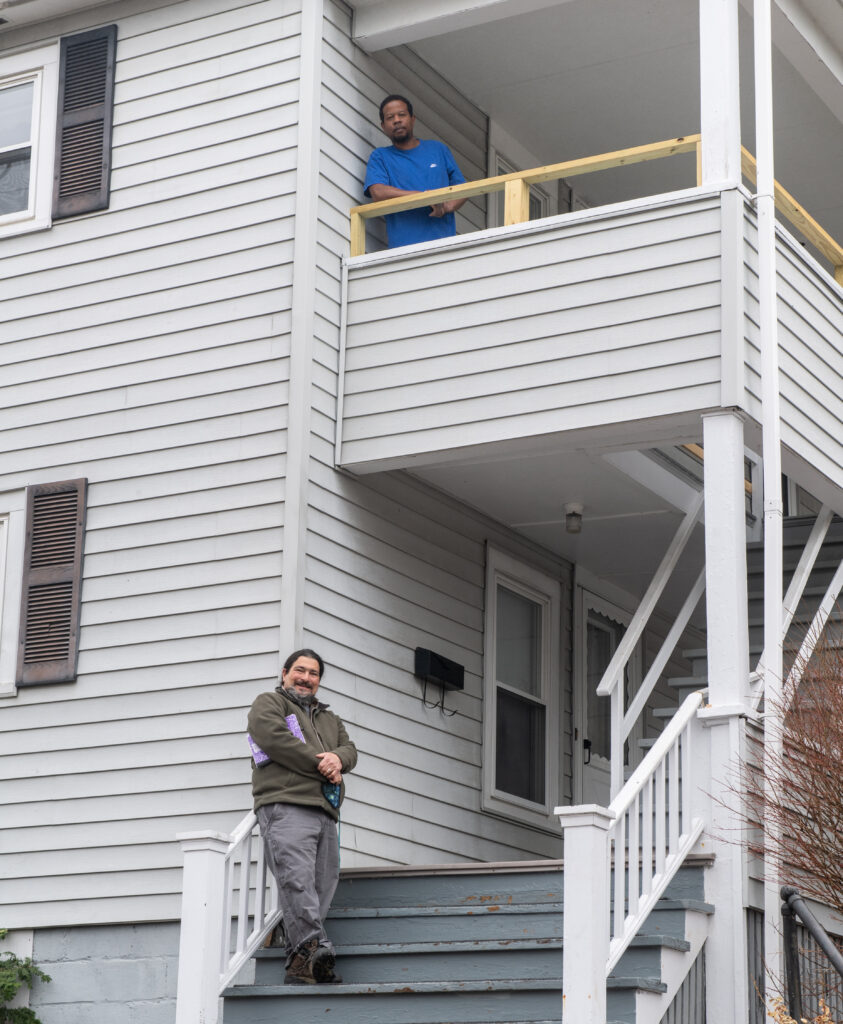
Vermont’s affordable housing shortage is not new — it didn’t start with the Covid-19 pandemic. But thanks to a pandemic-fueled wave of federal funding, a number of programs have sprung up over the last twelve months addressing this crisis in new and innovative ways. The Rehousing Recovery Program is one such program that successfully launched in 2020, and is serving as a model for a more long-term solution.
To understand the state’s affordable housing crunch, one need only look around at real estate. Vermont has some of the oldest housing stock in the nation, and this is especially true of its rental housing, with thousands of current and potential rental properties in need of serious repairs. Electrical, plumbing and structural upgrades as well as energy improvements require significant financial investments, often too steep for small, private landlords. At the same time, homeless assistance programs often struggle to find suitable housing for their clients that meet HUD standards.
Launched in July of 2020 with $6.2 million of CARES Act funding, the Rehousing Recovery Program aimed to tackle both of these issues at once. The program offered grants to private landlords of up to $30,000 per unit to rehab vacant and blighted apartments, bring them up to code, and bring them back online. Property owners in turn agreed to work with their local Continuum of Care entry system to find suitable renters, and to maintain their rents at HUD fair market level for 5 years. The catch – the program came with an impossibly tight three-month window to complete the work.
Paul Martorano is the Multi-Family Rental Improvement Program Coordinator for WWHT. He started in September, in the midst of the application process, and has since become the face of the Rehousing Recovery Program for Windham and Windsor county property owners, handling every step of the process, from application to inspection.
Paul describes some of the challenges of standing up the new program. “The process pretty much began with a site visit, to determine feasibility,” says Paul. “A lot of buildings were in pretty bad shape. I would review the proposed scope of work on the application, and see if it was realistic to complete the work by the December 20th deadline. Then the race was on to get contracts and permits, and then find licensed contractors to do the work. At the same time there was a shortage of labor and materials; contractors were getting sick; it was pretty stressful. We were literally figuring it out as we went along.”
While the original December 20th deadline proved to be an obstacle for some, overall the program drew strong interest from private landlords and netted 59 new apartments at the end of the initial “lightning round.” With funding now extended until the end of 2021, Paul is contacting those who withdrew their applications, helping them get extensions to bring their projects back online. “We do have a pretty good response from folks who were already in the program. Almost all the people that withdrew came back to add a unit or two. We have about 10 property owners with around 17 units that are in the process of being rehabbed now, and will hopefully be done by mid-summer.”
Kenya Lazuli is one of the property owners who benefited from the program. She and her partner own the historic South Royalton House in South Royalton, Vermont. Built in 1850 as a railroad-stop inn, the building had long served as housing for Vermont Law School students. Previous owners added apartments on the lower floors, but restoration of the third and fourth floor required the installation of a sprinkler system.
“We had pretty much given up on using the third floor,” she says. “With the grant, we installed sprinklers and added three apartments to the third floor. With the extension, we are approved for an additional third floor unit.”
Kenya credits Paul Martorano for helping them navigate the process. “Paul was incredibly helpful, very positive and supportive. His knowledge of construction helped make everything user-friendly. It’s been great having him in this role.”
“We’re aware of the housing shortage in Vermont. To be able to bring apartments into the market – it’s important, and it feels pretty great to be part of the solution.”
– Kenya Lazuli
Kenya and her partner consulted with Upper Valley Haven to find tenants, and ultimately partnered with Windsor Youth Services to place teens in need of housing. “We’re aware of the housing shortage in Vermont. To be able to bring apartments into the market – it’s important, and it feels pretty great to be part of the solution.”
What does it mean to bring these units up to code and back to market? “It’s housing,” says Tara Chase, assistant director at Springfield Supportive Housing Partnership. Her organization is part of the Continuum of Care linked with the Rehousing program. “It means being able to transition more individuals from homelessness into permanent housing. This program has opened more doors, and has been extremely helpful.”
“We need every unit we can get” says Bruce Whitney, Director of Homeownership for WWHT. “The rental market is so tight, any unit that comes back online is an improvement.”
Another major advantage to the program, says Whitney, is working with small, private landlords throughout all of Windham and Windsor counties. “We are working with folks in Wilmington, Norwich and South Royalton, along with our bigger communities, and we’re doing lots of different sized buildings – all different types of properties. It’s been an excellent tool in our toolbox.”
Tara Chase agrees. “We’ve had a few landlords enroll who we have not worked with in the past, which is great,” says Chase. “And the program has only served to strengthen our relationships with those we’ve worked with before, giving them an opportunity to do more. The program asks that we send at least three applications per unit. We’re now on round two, and we’ve smoothed out the process considerably. Landlords reach out to us for applications once the work is 50% complete.”
Chase says that from November 15th to the present, 18 individuals and families have been housed as a direct result of the Rehousing Recovery Program. All had been experiencing homelessness. “The program has definitely had an impact. We could still utilize another 60 units for folks in our region alone. The need is so great, and this program has helped to pave the way for more affordable housing options.”
So, what happens to the program after Covid-relief funding ends? Whitney says the wheels are already in motion with the proposed Vermont Housing Incentive Program (VHIP).
“The long term vision of the VHIP is to be able to provide services and funding to property owners and landlords, many of whom are small operators, small businesses,” Whitney explains. “We know from our own rental development, when you charge affordable rents, you need other resources to make ends meet for maintenance and upkeep. Private landlords don’t necessarily have the skills, knowledge or financial resources to tackle the required work. It’s all about getting our housing as safe and healthy as possible.”
“What we accomplished with the Rehousing Recovery Program – even if we had done it over 12-18 months, much less 3-6 months, it would be a big success,” says Whitney. “We touched a lot of communities. And when you start fixing up one or two properties, neighbors notice, and it develops momentum. We are continuing to get calls from landlords, wanting to be on our list.
“The governor has wanted to do a program like this for a number of years. Most legislators understand that housing is a critical need, and that we need to invest. The Covid relief funds gave us a unique opportunity to pilot this program and demonstrate its success. We learned a lot this past year, and now we’re able to put all that learning into the VHIP program.”




